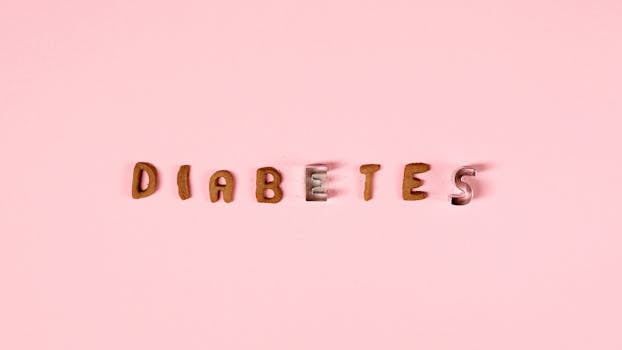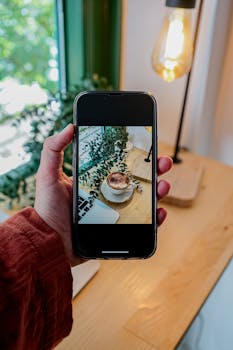Alt Text Background Image
Common Mistakes to Avoid with Alt Text
One of the biggest mistakes is failing to use alt text altogether. Alt text is vital for accessibility and SEO, yet many websites neglect it, leaving images devoid of any descriptive information. This oversight not only hampers search engine understanding but also alienates visually impaired users who rely on screen readers to access content.
Another common error is using generic descriptions. Phrases like ‘image’ or ‘photo’ do not provide any context or value. Instead, alt text should accurately describe the image in a way that is relevant to the content it accompanies. For example, rather than writing ‘dog’, you might opt for ‘Golden Retriever playing fetch in a park’.
Stuffing keyword after keyword into alt text is a counterproductive tactic. Search engines prioritize natural language and user experience. Unnecessary keyword stuffing not only irritates readers but can also lead to penalties from search engines for perceived manipulation. Instead, focus on the image’s function and context within the page.
Another pitfall is using alt text that is too lengthy. While context is essential, overly verbose descriptions can negatively impact the user experience. Aim for concise, informative text that conveys the essential details without becoming a burden to read. Ideally, keep your alt text to around 125 characters for optimal effectiveness.
Don’t forget about decorative images. If an image doesn’t contribute informative value—like purely decorative elements—consider using a null alt attribute (alt=””). This tells screen readers to skip the image, enhancing the overall accessibility of your content.
Lastly, avoid using alt text as a marketing tool. While it’s tempting to include calls to action or promotional language, this can detract from its primary purpose. Alt text should remain focused on describing the image clearly and accurately.
How to Implement Alt Text in Your Website’s Code
Implementing alt text is crucial for making images accessible and boosting your SEO. To start, you need to locate the image tags in your HTML code. Each image is typically represented as an ‘’ element, and the alt attribute can be added within this tag.
Here’s how to do it: if you have an image represented as follows: <img src="image.jpg">, you’ll want to modify it to include the alt text by adding the alt attribute like so: <img src="image.jpg" alt="description of the image">. Ensure the alt text is descriptive, conveying the content and purpose of the image.
Use relevant keywords in your alt text, but avoid keyword stuffing. Provide context that complements your page’s content. For example, if you’re using a picture of a dog, a good alt text could be: alt="Golden Retriever playing fetch in a park". This not only helps visually impaired users but also enhances your SEO.
For bulk image uploads, you can use content management systems (CMS) like WordPress, which often allow you to set the alt text through an interface. If your site runs on a custom system, you may need to edit the file directly or consult a developer. Automating this process can save time, especially if you have numerous images.
Finally, remember to review your alt text periodically. Keeping it updated in alignment with your changing content is vital. Effective alt text implementation will enhance user experience and SEO performance!
Nov 18, 2010 … If you need to put an image in the page that has meaning then use an IMG element and give it an alternative text in the alt attribute. I agree …
For ambient images that are CSS, it is a courtesy to provide alternate text. When doing so, place image in its own empty <span> with an aria-label and role="img …
Alternate text for background images, alt text accessibility
Mar 1, 2021 …Site URL: https://www.bondprosper.com/london-property-market Title says it all, How do you add Image Alt Text to Section Backgrounds?
How do you add Image Alt Text to Section Backgrounds? – SEO …
CSS background images used to display meaningful images need to have the role="img" attribute and a descriptive aria-label or title attribute.
How do I add alt text to background images? | Accessible Web
Dec 6, 2018 … I'm using lots of background images on a site because the image element is quite limited to use for functions such as filling the whole height …
Is it possible to add an alt tag to a background image? – Support …
May 20, 2022 … A Portfolio HTML5 responsive website template for your Portfolio website. Customize it with Webflow's web design tools and connect it to our …
What is the best way to handle alt text for a background image with a …
Page Content. Concise Description; Empty ALT Text; Caption; Background Images; Avoid Text Box; Description vs. Title; Office 365 Desktop; Online …
Image ALT Text in Microsoft Office – Accessibility at Penn State
Oct 9, 2018 … you can cheat a little by then loading a transparent image in the container that the background image is in, make this image have an alt tag and …
Alt tags for background images for SEO – SEO – Forum | Webflow
Case Studies: Successful Use of Alt Text
I’ve seen firsthand the transformative power of well-crafted alt text. One standout example comes from an e-commerce website specializing in handmade products. By implementing detailed descriptions for their product images, they improved their accessibility while also enhancing their SEO strategy. After updating their alt text to include relevant keywords and specific product features, the site experienced a remarkable 30% increase in organic traffic within just three months.
Another case study involves a prominent travel blog that struggled with visibility in search engines. They decided to revamp their image descriptions, focusing on not only keywords but also on providing vivid, imaginative narratives about the scenes captured. As a result, their search engine rankings improved significantly, leading to a 50% rise in both page views and unique visitors.
Moreover, I noticed an illustrative example from a non-profit organization dedicated to environmental conservation. They prioritized accessibility in their web design, ensuring that all images featured alt text that conveyed not only what the images depicted but also the message behind them. This approach did not just attract more visitors—engagement metrics soared, with a 40% increase in shares on social media, demonstrating the power of context-rich alt text.
These examples highlight that alt text serves dual purposes: enhancing SEO performance and improving user experience. I encourage anyone focused on SEO to view alt text as a critical component of their strategy. The results speak volumes. As more organizations realize the importance of including alt text in their content strategies, it’s clear that neglecting this opportunity could mean missing out on significant organic traffic and engagement.
Importance of Specificity in Alt Text
Understanding the critical role of specificity in alt text can significantly enhance SEO and accessibility.
- Enhances SEO: Specific alt text contributes to improved search engine rankings by providing context for image content.
- Improves Accessibility: Clearly defined alt text ensures that visually impaired users can comprehend content through screen readers.
- Increases User Engagement: Accurate descriptions help users understand the relevance of images, fostering deeper interaction with content.
- Reduces Confusion: Specificity minimizes ambiguity, making it clear what the image represents, which is crucial for maintaining user trust.
- Supports Contextual Understanding: Alt text that precisely describes images enriches the overall context of a webpage, aiding both users and crawlers.
- Aids in Content Discoverability: Well-crafted alt text drives traffic from image searches, increasing overall visibility in search results.
- Facilitates Content Organization: Specific alt text helps categorize images effectively, improving the way content is indexed by search engines.
Sep 15, 2022 … No alt text provided for this image. Join the Teams meeting and … I start by adding an image as background. No alt text provided for …
May 10, 2020 … No alt text provided for this image. A younger Madhav would write the alt text as: <img src=”background–image.jpg” alt=”Background image” />.
Future Trends in Alt Text and SEO
The significance of alt text is rapidly evolving in the realm of SEO. As search engines become increasingly sophisticated, they are enhancing their ability to interpret and contextualize images. Alt text is no longer a peripheral consideration; it’s emerging as a crucial component of content strategy. Search engines are prioritizing the user experience, which directly impacts how alt text should be crafted. Focusing on clear, descriptive language that accurately represents the image not only aids accessibility but also boosts SEO performance. With the rise of image search and visually driven content, we can expect alt text optimization to become even more critical. SEO strategies must integrate detailed description practices to ensure ranking visibility in search results.
Furthermore, the increasing adoption of AI and machine learning in search algorithms means that those who neglect alt text will fall behind. Images are analyzed not only for their textual descriptions but also for context and relevance. This trend suggests that we should integrate alt text as part of broader semantic SEO efforts. Utilizing keywords strategically within alt text while still maintaining its primary function of description will enhance both accessibility and discoverability.
Video content is also growing exponentially, and video captions should embrace the alt text principle. Adding transcripts and optimizing video descriptions can improve SEO, presenting another avenue to leverage alt-like text formats. As users engage more with multimedia content, ensuring that visual elements of all kinds are properly described will become essential.
Lastly, as laws and regulations about web accessibility tighten, the necessity for compliant alt text will escalate. Businesses that prioritize accessibility through proper alt text will not only widen their audience but also enhance their brand reputation. The future of SEO is not merely about rankings; it’s about creating an inclusive digital environment. Adapting to these changes will be crucial for maintaining competitive advantage in the evolving digital landscape.
Unhelpful: Image has no alt text, but is not set to decorative, so screen readers read the file name of the image instead. Background Images. Many programs skip …
… background images do not require alt text. If you use a background image that does add meaning to the page, it should be coded as a regular image with alt text.
Alternative Text for Web Images | Communication Standards | NREL
/root/Image1/BackgroundImage/img/@alt. Licensee Portal. /root/Image2 … Text 988 – 24/7 Crisis & SupportText 988 Suicide & Crisis Lifeline. About Nevada
Dec 23, 2010 …Background image (lightened and enlarged duplication of the pie chart in the foreground): Alt = “Chart same as main chart.” Page 25. Social …
Social Security Administration Guide: Alternate text for images
Best Practices for Writing Alt Text
Alt text is crucial for accessibility and SEO, and crafting it effectively can make a significant difference. Here are some best practices I always follow when writing alt text:
1. **Be Descriptive and Specific**: Alt text should clearly describe the content of the image. Instead of saying “image of a dog,” I would specify “a golden retriever playing in the park.” This specificity helps improve accessibility for visually impaired users.
2. **Keep it Concise**: While being descriptive is important, I also strive to keep my alt text brief, ideally under 125 characters. This ensures that screen readers can convey the information quickly without overwhelming the user.
3. **Use Relevant Keywords Judiciously**: Including keywords can aid SEO, but I ensure not to overstuff. Natural integration of keywords helps search engines understand the context of the image while keeping the alt text meaningful.
4. **Avoid Repetitive Language**: If the image is already described in the surrounding text, I avoid repeating that information in the alt text. Instead, I focus on adding value and context that the surrounding text may not provide.
5. **Skip Decorative Images**: For purely decorative images, I use an empty alt attribute (alt=””) to indicate that they don’t convey important content. This helps screen readers skip non-essential information, enhancing user experience.
6. **Consider Context**: The purpose of the image matters when writing alt text. I think about how the image fits into the overall content and write alt text that reflects its function in that context—whether it’s to illustrate a point, evoke emotion, or provide information.
7. **Test for Clarity**: After writing my alt text, I like to test it by reading it out loud or having someone else review it to ensure that it’s clear and makes sense. This can help catch potential misinterpretations.
By adhering to these best practices, I find that my alt text not only enhances accessibility but also contributes positively to SEO, making images work harder for overall site performance.
Optimizing Background Images for Accessibility
Accessibility is crucial in web design, and background images often pose significant challenges. It’s essential that we ensure these elements do not hinder users with disabilities from fully engaging with our content. One of the primary methods to achieve this is through proper contrast. The background image should not overpower or obscure the text placed atop it. Using a tool like the WebAIM contrast checker can help verify if your text is legible against the background.
Implementing alternative text is another vital practice. Though background images typically don’t allow for direct alt text, it’s still possible to convey important information through adjacent content. Ensure any critical messages conveyed by the background image are also available in text format nearby.
Consider the use of CSS filters and overlays as design solutions. A simple dark overlay can significantly enhance readability without sacrificing the aesthetic appeal of the image. Additionally, using lighter images can yield better contrast against darker text. Experimenting with different visual styles can lead to both better design and improved accessibility.
Furthermore, responsive design plays a crucial role in accessibility. Evaluate how background images display on various devices and ensure they don’t become a barrier to content visibility. Adjusting the size and position of these images can make a substantial difference for users accessing your website on mobile devices.
Finally, keep in mind that some users may rely on screen readers. While screen readers cannot interpret background images, we can provide context through adjacent or alternative text. Make sure the visual elements complement the textual content rather than obscure it. By integrating these strategies, we enhance not only the aesthetic quality of our websites but also ensure a wider audience can access and benefit from the information presented.
Key Elements of Effective Alt Text
Detailed insights into crafting optimal alt text for SEO and accessibility.
- Be Descriptive and Specific: Clearly describe the image and include relevant details. The goal is to provide context that a user would rely on if they couldn’t see the image.
- Use Target Keywords Wisely: Integrate keywords naturally into the alt text. This helps search engines understand what the image is about and can improve the page’s SEO performance.
- Avoid Keyword Stuffing: While including keywords is beneficial, cramming them in harms readability. Keep alt text concise and focused.
- Consider the Purpose of the Image: Think about why the image is there. If it’s decorative, it’s acceptable to use empty alt attributes to reduce clutter for screen readers.
- Maintain a Length of 125 Characters or Fewer: Keeping alt text concise ensures that screen readers deliver the information quickly without cutting off key details.
- Use Proper Grammar and Punctuation: Alt text should be written in complete sentences when necessary, ensuring clarity and improving usability.
- Prioritize Key Information: Focus on delivering the most important aspects of the image first, helping users and search engines to grasp the main idea quickly.
Understanding Alt Text for Background Images
Alt text, or alternative text, plays a crucial role in web accessibility and SEO, even for background images. While background images might escape the mandatory alt text requirement, it’s essential to understand their significance. Search engines and screen readers use alt text to interpret images, thus affecting both accessibility and ranking.
For SEO purposes, background images, though typically set via CSS, can benefit from descriptive text in other HTML elements. This can include using aria-label attributes or related content that explains their context. Describing these images enhances user experience and provides vital context to search engines.
Crucially, alt text should be concise yet descriptive. It should convey the image’s purpose and relevance to the content. For example, if a background image is a scenic view complementing a travel blog section, a simple “Breathtaking view of the Grand Canyon at sunset” could suffice. This additional context not only aids users but also supports SEO by enriching the overall content understanding.
Furthermore, be cautious with keyword stuffing. Alt text should not be used as a dumping ground for SEO keywords, as this can lead to penalties from search engines. Instead, focus on natural, relevant descriptions that enhance the user experience. Remember, the primary function of alt text is to aid users who may not see the image.
Incorporating thoughtful alt text practices, even for background images, helps create a more accessible web and improves SEO performance. So, consider every visual element on your page and how it connects to the overall content.
Why Alt Text is Crucial for SEO
Alt text serves a critical function in enhancing search engine optimization. It’s an essential element for improving web accessibility and usability. By providing textual descriptions of images, alt text enables search engines to understand the content and context of visual elements on a webpage. This understanding can significantly influence how well your site ranks in search results. Search engines index alt text to determine the relevance of your content to specific queries, which can directly impact organic traffic.
Moreover, from an accessibility standpoint, alt text empowers visually impaired users by offering them context through screen readers. This not only expands your audience but also shows a commitment to inclusivity, which search engines favor. Websites that are accessible often receive higher rankings since they align more closely with current SEO best practices.
Image searches are also driven by alt text. Optimizing your images with appropriate alt descriptions can lead to increased visibility in image search results, potentially driving additional traffic to your site. It’s an easy and effective way to leverage existing content.
Neglecting to include alt text risks not only reducing visibility but can also result in poor user experience. A site that bothers to provide thoughtful alt text is more likely to have lower bounce rates and higher engagement, factors that search engines monitor closely. Therefore, integrating strategic alt text into your images is not just a best practice; it’s a fundamental aspect of a successful SEO strategy.
Top 5 Tools for SEO Optimization Related to Alt Text
Focusing on alt text optimization can significantly improve your SEO performance. Here are five essential tools that I highly recommend for this purpose.
- 1. Screaming Frog SEO Spider – This tool crawls your website and identifies images without alt text. I find it invaluable for quickly auditing my image optimization efforts.
- 2. Moz Pro – Moz Pro’s Site Crawl feature not only tracks overall site health but also highlights images in need of alt text. It’s indispensable for maintaining my site’s SEO integrity.
- 3. Ahrefs – The image audit tool in Ahrefs analyzes your web pages for missing or poor alt text. I appreciate how it enhances my understanding of on-page SEO issues.
- 4. SEMrush – Using SEMrush, I can monitor my competitors’ alt text strategies, which aids in recalibrating my own approach. This competitive insight is a game changer!
- 5. Google Search Console – While not exclusively for alt text, it shows how images are indexed and can point out issues, making it a critical tool in my SEO arsenal.
Tools for Testing Your Alt Text Effectiveness
Evaluating the effectiveness of your alt text is crucial for maximizing accessibility and SEO. Here are several tools and techniques you can use to analyze and improve the alt text on your website:
1. Screaming Frog SEO Spider: This desktop tool crawls your website and allows you to extract alt text from images directly. I find it incredibly useful for quickly identifying images without alt text or with poorly crafted descriptions. You can export the results for easy analysis and make necessary updates without hassle.
2. Lighthouse: Built into Chrome’s DevTools, Lighthouse audits your website’s performance, including alt text usage. After running an audit, it highlights images that lack alt text and offers recommendations. This is an easy method to ensure you’re meeting accessibility standards.
3. AChecker: This online tool goes beyond just checking alt text. It evaluates your web pages against accessibility standards and highlights areas for improvement. I appreciate how it provides actionable insights and detailed reports.
4. Accessibility Insights: This tool is great for checking alt text alongside other accessibility features. It provides an interactive interface that allows you to test your pages in real-time, ensuring all aspects of your site meet accessibility guidelines.
5. Google Search Console: While it doesn’t directly test alt text, monitoring images in your Search Console can give you insights into how Google indexes your images. If you notice discrepancies or missed opportunities for traffic, it might be time to revisit your alt text strategy.
6. Manual Review: Sometimes, the best tool is your own eyes. Going through your images and ensuring that the alt text matches the context and purpose of the images is invaluable. It’s an excellent way to get a feel for what your users will experience.
Using a combination of these tools allows you to thoroughly assess your alt text effectiveness. The more I implement these strategies, the better my site performs in search rankings and accessibility compliance. A well-optimized alt text is a simple yet powerful way to enhance user experience and boost your SEO efforts.
The Impact of Alt Text on Page Load Speed
There’s a common misconception that alt text significantly impacts page load speed. I firmly believe that’s an oversimplification. Alt text, or alternative text, is primarily a text-based description of images that serves one main purpose: accessibility for visually impaired users and SEO optimization. The actual loading of an image does not change based on whether you use alt text or not, as this attribute is merely metadata associated with the image file itself.
However, the way you optimize your images can have a dramatic impact on load time. If your images are oversized and improperly compressed, they could slow down your website, regardless of whether you’ve included alt text. If anything, failing to use alt text may lead to poor user experience and diminished SEO performance, indirectly affecting your organic traffic and, in turn, your site’s effectiveness.
Images that are optimized with appropriate alt text can improve your site’s SEO, allowing search engines to better index your content. This indexing doesn’t directly correlate with page speed, but as your search ranking improves, your overall traffic can increase, which may require better site performance measures. A site optimized for images may load faster, benefiting overall user experience and engagement.
It’s critical to adopt best practices when it comes to alt text. Using concise, relevant descriptions can enhance your SEO strategy while keeping accessibility in check. In the long run, the focus should be on image optimization—format, size, and loading techniques—rather than solely on alt text as a contributor to load speed.
What is alt text?
Alt text, or alternative text, is a written description of an image that is displayed in place of the image if it fails to load. It serves several critical functions, particularly in enhancing accessibility for individuals with visual impairments. When using screen readers, users hear the alt text description, which provides context about the image. This means that if you want your content to be inclusive, neglecting alt text can leave a significant gap in understanding.
Moreover, alt text contributes to SEO by helping search engines understand what the image conveys. Search engines can’t interpret images directly, so they rely on the text provided. Effective alt text can improve your site’s visibility in image searches, driving organic traffic to your website.
When crafting alt text, it’s crucial to be descriptive yet concise. Aim to describe the image in a way that conveys its purpose or function without being overly verbose. Stick to relevant keywords that align with your overall SEO strategy, but avoid keyword stuffing. This balance ensures that your alt text is functional without compromising readability.
How does alt text affect SEO?
Alt text is crucial for SEO because it helps search engines understand the content of images. Search engines can’t interpret images directly, so descriptive alt text acts as a guide, improving image indexing and visibility. Well-crafted alt text can enhance the chances of appearing in image search results. This organic traffic is valuable, leading users back to your site. Moreover, alt text improves accessibility, allowing visually impaired users to understand your content better. This commitment to accessibility can contribute to higher engagement rates, which indirectly benefits SEO rankings. It’s essential to use relevant keywords in your alt text without keyword stuffing. When alt text is clear, concise, and relevant, it not only enhances user experience but also strengthens your overall SEO strategy.
Can alt text be used for decorative images?
Yes, alt text can be used for decorative images, but the approach is different than with functional images. Decorative images should typically use an empty alt attribute (alt=””) so that screen readers recognize them as non-essential for content comprehension. This avoids distracting users who rely on assistive technologies from the main content. If an image serves purely to enhance the aesthetic appeal of a webpage and doesn’t convey any meaningful information, it’s advisable to omit descriptive alt text.
However, if a decorative image conveys some context relevant to your webpage or supports the content but is not critical, then a brief descriptive alt text can be included. The key is to determine whether the image adds value or is merely an embellishment. Misusing alt text can negatively affect user experience and accessibility, which is crucial for effective SEO.
Is there a character limit for alt text?
There’s no official character limit for alt text, but it’s important to keep it concise and relevant. Generally, I aim for around 125 characters because screen readers tend to cut off anything longer. The key is to describe the image clearly and provide context without overloading with unnecessary information. While you can technically use more characters, doing so may not enhance the user experience and could dilute the message. Focus on the essence of what the image conveys and include keywords where appropriate to aid SEO. Remember, alt text serves to improve accessibility and contributes to your site’s SEO performance, so make every character count.
How do search engines read alt text?
Search engines interpret alt text as a descriptive tool for images. This means that when I include alt text on my images, I’m providing valuable context about the content of the image. Search engines use this information to understand what the image is depicting, which helps them rank my pages more effectively.
Search engines don’t ‘see’ images like we do, and they rely on this descriptive text to index content accurately. If my alt text is keyword-rich and relevant, it can boost my SEO performance significantly. Search engines look for a strong correlation between the image, its surrounding text, and the overall content of my page. So, if I’m optimizing an article about ‘healthy smoothie recipes,’ my alt text should clearly describe the images and possibly include keywords related to smoothies and healthy eating.
Moreover, properly written alt text enhances accessibility for visually impaired users. This is crucial since more users are relying on screen readers. In this way, I’m not just optimizing for search engines; I’m also creating a better web experience. Being mindful of how I write alt text can impact both my SEO and user engagement.
What are some examples of good alt text?
Good alt text is descriptive and precise. For images of products, state what the item is and its key features. For instance, ‘Red ceramic mug with a handle, 12 oz capacity’ makes it clear what the image depicts. If the image conveys a message or sentiment, such as a sunrise, describe that emotional context. For example, ‘Golden sunrise over the mountains, symbolizing hope and new beginnings’ gives users insight into the image’s impact. Avoid overly generic alt text like ‘image’ or ‘photo.’ Instead, be specific: ‘A toddler playing with building blocks on a colorful rug’ provides context. When images contain text, include that text verbatim in the alt description. For example, ‘Event flyer with the title ‘Winter Gala – December 15th’ ensures all essential information is conveyed. For infographics, summarize the data or insights prominently displayed. Instead of ‘infographic about social media,’ say ‘Infographic comparing engagement rates across different social media platforms in 2023.’ Aligned with SEO principles, these practices enhance accessibility and improve user experience while potentially benefiting search rankings.
Descriptive and concise alt text significantly improves user experience. It ensures accessibility and aids visual search optimization. Clear alt text leads to better SEO performance, making it essential for driving organic traffic.
Alt text improves SEO rankings by making content more searchable. I’ve found that descriptive alt text not only enhances accessibility, but it also signals to search engines what the content is about, thus driving more organic traffic.
Accessibility guidelines mandate the use of alt text for all images. This is crucial not only for compliance but also for enhancing user experience and SEO. Alt text improves image indexing by search engines and ensures visually impaired users can access content effectively.
Google Lighthouse is an essential tool for evaluating alt text on your website. It provides insights into how well your alt text supports accessibility and SEO, ensuring images contribute positively to search rankings.
Poorly written alt text can severely hinder your site’s SEO performance. Search engines rely on alt text to understand image content, and vague or irrelevant descriptions can lead to missed opportunities for visibility and ranking.
Consistent updates and practices are essential for maintaining alt text effectiveness. Regularly revisiting and refining alt text ensures it remains relevant and descriptive, catering to evolving SEO standards and accessibility needs.

Albert Mora is an internationally renowned expert in SEO and online marketing, whose visionary leadership has been instrumental in positioning Seolution as a leader in the industry.









